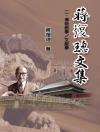This book delves into topics on pilgrimage travel and communities from a variety of perspectives through academic research based on the Middle East, Northeast Asia, the Indian subcontinent, and Europe, where sacred sites have become of great importance for both international and domestic tourism. In particular, Europe and Asia possess a high volume of world-renowned pilgrimage sites that are currently being developed as tourism destinations in their respective countries, such as Santiago de Compostela (Spain), Lourdes (France), and Koyasan (Japan). This book includes studies on these two continents that harbor both a great history of pilgrimage tradition, as well as tourism development related to religious travel.
The book importantly covers the role of the community in religious tourism, as well as the impact on the locals, which is comparatively an unexplored area. Whilst pilgrimage is seen as an effective tool to revitalize local economies, this book also reveals the different challenges to achieving this goal.
Realizing the importance of the interrelationship of community and pilgrimage travel, as well as the lack of studies on it, this book seeks to address this research gap through 14 chapters divided into two parts, ‘Communities and Constestation’ and ‘Pilgrimage Shaping Communities’. To ensure diverse perspectives, case studies from different Eurasian countries, written by authors with expertise in the study of pilgrimage and religious travel, are included. Readers can expect to gain new perspectives by having a deeper comprehension of the ‘community side‘ of pilgrimage travel in Eurasia, and thus an integral understanding of contemporary pilgrimage
Mục lục
Chapter 1 Communities and pilgrimage in tourism research- Chapter 2 Sacred Spaces and the ‘Other’: Social Distance, Functional Distance, and Two Pilgrimage Sites in Asia.- Chapter 3 Development of Tourism Governance for Religious Tourism: A New Form of Local Community in Najaf, Iraq.- Chapter 4 Tourism visitors, pilgrimage and contested spaces: community, heritage, ecology and perception.- Chapter 5 Monastic Hosts’ Sentiments Toward Hosting Buddhist Associations’ Group Pilgrims The Case of Pu-Tuo.- Chapter 6 Pilgrimage tourism to sacred places of high Himalaya and its impact on residents across generations. The case of Yamunotri Temple.- Chapter 7 Impacts of processional pilgrimage on host communities: Insights from the Palkhi pilgrimage in India.- Chapter 8 Pilgrimage Tourism in Palestine: The Backbone of the Palestinian Economy.- Chapter 9 Pilgrimage Tourism, Accessibility and Local Communities in Western Countries. The Camino de Santiago de Compostela and the Via Francigena forall.- Chapter 10 Hindu Pilgrimages (India) and Religious Functionaries.- Chapter 11 The Network of the Way of St. James in Poland – Genesis, Development as well as Religious, Cultural and Socio-Economic Impact.- Chapter 12 Sacred Architecture as a Resource for the Development of Religious Tourism in the Regions of Ukraine.- Chapter 13 Pilgrimage, means of transportation and its effects on host communities.- Chapter 14 Pilgrimage Tourism Afterword: Emergent Themes and Implications.
Giới thiệu về tác giả
Ricardo Nicolas Progano (Ph D) is a Lecturer at the Center for Tourism Research of Wakayama University, Japan. His research interests include religious tourism, heritage management, and cross-cultural studies. He has carried fieldwork on the recent tourism development of Japanese pilgrimage sites, such as Kumano Kodo and Koyasan. His research publications include: Progano, R. N., Kato, K., & Cheer, J. M. (2020). Visitor diversification in pilgrimage destinations: Comparing national and international visitors through means-end; and Progano, R. N. (2021). The impact of COVID-19 on temple stays: A case study from Koyasan, Japan.
Joseph M. Cheer is incoming Professor of Sustainable Tourism and Heritage, School of Social Sciences, Western Sydney University in 2023. He was previously based at Center for Tourism Research, Wakayama University, and holds adjunct/visitor positions at AUT, New Zealand and UCSI University, Malaysia. Joseph is Co Editor-in-Chief of the leading journal in tourism and geographies, Tourism Geographies. To date, he has published over 60 articles and book chapters and has published 10 books. Joseph is board member International Geographical Union (IGU) Commission on Tourism; American Association of Geographers, Recreation, Tourism and Sport (AAG-RTS) and Critical Tourism Studies-Asia Pacific (CTS-AP). He is also a board member of key tourism industry association, PATA (Pacific Asia Travel Association).
Xosé Manuel Santos is a full professor in Geography, at the University of Santiago de Compostela, in the Department of Geography. He is specialised in tourist studies. He has carried out work on the recent changes in rural areas and other Human Geographic aspects. He also dedicates his research time to developing tourist analysis referring to historic cities, cultural itineraries, and pilgrimage routes. He has been the Director of the Centre for Tourism Studies and Research (CETUR). at the University of Santiago de Compostela (2005-2014). His professional career abroad has seen him be the guest lecturer in universities in Ireland (University College Cork), Norway (University of Trondheim), UK (University of Edinburgh), and Canada (Memorial University of Newfoundland and UQAM-Montreal). Some academic publications: 1. Santos, X (2021). The multiple views on the values and identity of the Pilgrimage to Santiago. En D. Liutikas (Ed.), Pilgrims: Values and Identities. Cabi: Wallingford, pp. 83-93. 2.“Landscape and power: The debate around ugliness in Galicia (Spain”) (in collaboration with Piñeiro). Landscape Research 45 (7), pp. 841-853. 2020. 3.“Analisys of territorial development and management practices along the Way of Saint-James in Galicia (Spain) (in collaboration with Lopez). In Griffiths, M. and Wiltshier, P. (Eds.): Managing Religious Tourism. Cabi, Oxford, pp. 112-123. 2019












